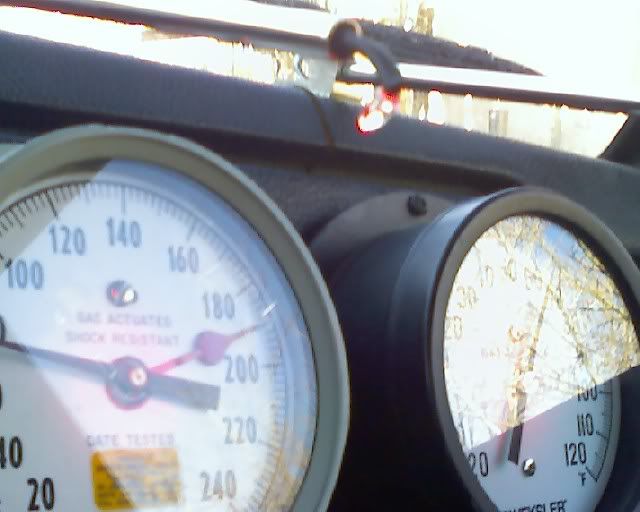|
Hi Glynn,
Here are some excerpts from my "Canned Posts" file. Voice of experience and all that. At least it will bump this thread back up in the "recently modified" category.
===============================>
Since the pre-ABS 200's have two separate hydraulic systems, the recommended sequence (below) bleeds each system separately.
On the front calipers, the upper two cylinders form an inverted "U", with a single bleeder at the highest point. The lower two cylinders form an upright "U", with bleeders at the two high points. The upper and lower cylinders are each in a separate hydraulic system.
(See illustrations in Bentley, p 500-1 and Haynes, p 9-13)
Either system can be done first:
System A:
1) Left rear
2) Left front - Upper piston chambers (single bleeder, top)
3) Right front - Upper piston chambers (single bleeder, top)
System B:
4) Right rear
5) Right front - Lower piston chambers (inner and outer bleeders, either first)
6) Left front - Lower piston chambers (inner and outer bleeders, either first)
\==================================================\
Rebuilders sometimes get Left and Right halves of 240 front calipers paired up wrong. The inner half, where the lines attach, will have an opposite side outer half paired to it but it will be upside down!!!.
Check the TOP of each front caliper, right near the mating joint between the two halves. The surface should be free of any punch marks.
Then look up at the BOTTOM of each one. You should see a good-sized "dimple" on each half, near the joint line (within 1/2" or so).
If you DO see a dimple on the TOP of the outer half, that caliper has an unbleedable lower, outside passage.
What appears to be the "Outside Lower" chamber bleeder screw is actually connected to the bottom of the Outer Upper chamber. (It should be the Outer Lower chamber & bleeder on the opposite side of the car.)<<
\=============================================\
Here's a Brake Tip I toss in at every opportunity:
You can prevent Master Cylinder Brake Fluid Loss from any/all open brake line(s) by blocking the brake pedal depressed before you start. It only takes an inch or two on the pre-ABS 240s. The ABS 240s need more pedal travel, like the 700/900 cars (in which case the bleeder needs to be open while pedal is being depressed almost all the way).
I made a wooden prop that hooks to the bottom edge of the pedal and bears against the 240 seat adjuster bar. It's handy for checking brake lights too. But remember to disconnect the battery or pull a fuse to keep brake lights off while the pedal prop is in place.
The 700/900 Green Book shows the 700/900 pedal fully depressed by a special tool (easy to replicate with a 2x4, etc.). I made one with a notch for the pedal and another to fit the bottom of the steering wheel. The book also says to open a bleeder first, and use a tube and container to catch the fluid expelled when the pedal is being depressed.
For systen flushing, I use a clear bleed hose and ATe Super Blue fluid. So "When the blue comes through, you know it's new." Takes less than a liter to do the 240. On the next flush I switch to ATe Amber fluid (or any DOT 4).
\================================================\
As a bleeder the MityVac really sucks (pun intended), for reasons stated. But you can use it as a pressure bleeder, with a little junk box fabricating.
I adapted a hose fitting to a spare MC cap, attached about 30" of hose leading to the pressure port on the MityVac, and "tee'd" a cheap vac/pressure gauge into the hose (MityVac Gauge reads vac only). With 4 or 5 pumps, there is 10 to 12 psi in the MC, which I've found to be adequate, but lately have used it up to 16psi.
You can bleed at least one rear wheel without refilling or repressurizing. Or maybe once per wheel. But first clear out the old fluid in each cylinder by slowly pressing each piston back with the bleeder open, using a bleed tube to catch the expelled fluid. It takes only a minute to top up both fluid and pressure as needed.
<================================\
Hope there was some help here,
--
Bruce Young, '93 940-NA (current), 240s (one V8), 140s, 122s, since '63.
|


